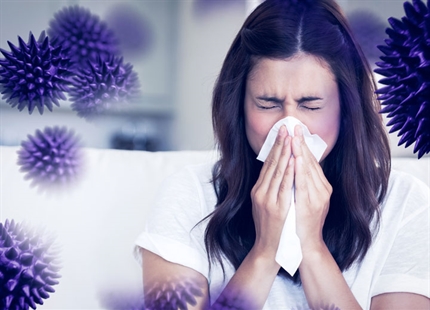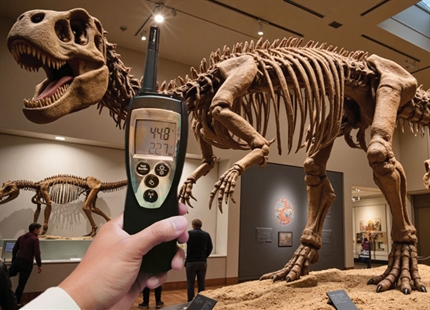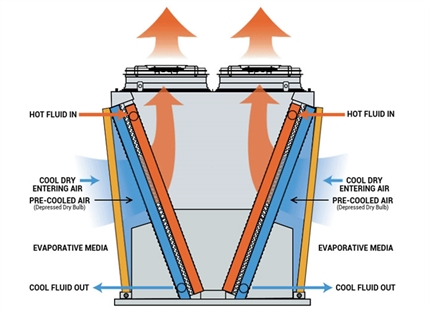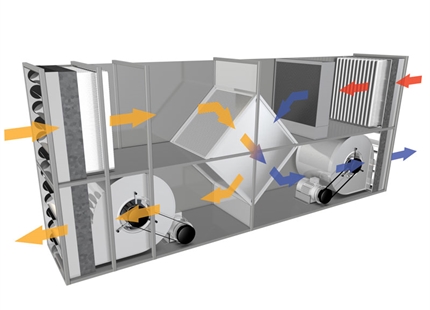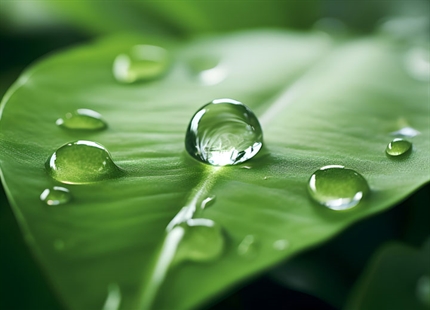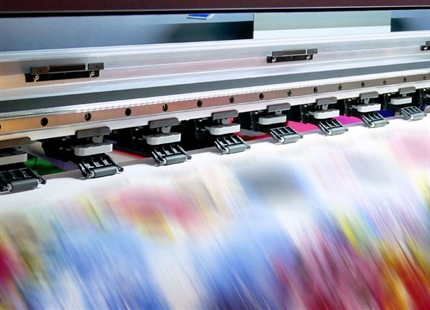
Author: Dave Marshall-George, UK Sales Manager, Condair plc
The importance of indoor humidification for health
Headaches, sore throats, sore eyes, skin irritation and contact lens discomfort are all symptoms of a dry indoor environment. Unfortunately we are not well equipped to notice a dry atmosphere in the same way as we notice being unusually cold or warm. Because of this we commonly fail to associate discomfort or health problems we experience at work and home with low relative humidity.
The ideal level of indoor humidity is between 40-60% relative humidity (%RH), a figure endorsed by HEVAC, CIBSE, BSRIA and BRE. The Health and Safety Executive, in their Display Screen Equipment Regulations 1992, oblige employers to maintain a level of relative humidity that prevents discomfort and problems of sore eyes where people work at computer terminals for long periods.
However, offices through the UK are often well below this level. A study by Volvic into 500 workplaces found that one in five offices in the UK were as dry as the Sahara desert, with 25% relative humidity, and one in ten as dry as California’s Death Valley, with only 23% relative humidity.
The science behind a healthy humidity
Check out the many studies that prove the optimal indoor humidity for health is 40-60%RH
Click hereEffects of low RH
One of the first noticeable effects of dry air is electrostatic shocks, which occur below a threshold of 40%RH and can rapidly become a nuisance. Above this level electrostatic shocks are eliminated.
Eyes are particularly susceptible to dry air as the thin layer of moisture on the cornea quickly evaporates. Contact lens wearers express discomfort that can increase by a factor of five as humidity drops from 45%RH to 20%RH, by which stage dust and dirt deposits on lenses increase causing greater irritation. If the air is too dry the skin, scalp and hair also begin to suffer. With no exposure to moisture, skin develops rashes and rough patches, the scalp starts to flake and hair will become brittle.
The nose and throat act as a powerful humidifier for inhaled air and mucous helps protect against infection by trapping microbes and dust. They start to dry up in conditions below 55%RH, quickly resulting in nasal stuffiness, dry mouth and sore throat. Persistently low rH increases susceptibility to infections such as colds and coughs.
People’s perception of warmth varies with rH and it is possible to reduce ambient temperature to provide a sensation of warmth when the humidity is at a comfortable level, so reducing heating costs.
Causes
In the UK, low RH in the workplace occurs primarily in winter when heating systems are on. A typical office without a humidification system will experience relative humidity below 40% for about a third of the year. Go further north and the problem is more extensive. Exceed the design specification of the building with more people, additional computer equipment and office machines, and the problem worsens as the indoor temperature rises.
A third of the year is a significant proportion and should not be ignored as employee welfare is an important issue. Commercially it makes sense, too: if people are comfortable, they’re more productive.
Solution
In order to ensure a comfortable, healthy and productive office environment of at least 40%RH, it is essential for most offices to employ some method of humidification. Incorporating a well-designed humidifier within a building’s air-conditioning system will eliminate dry air problems.
All too often the humidifier is the last thing to be considered when planning building services, even to the point of omitting it altogether where cost is an issue and simply leaving a space for a steam humidifier to be fitted at a later date. However, as the cost of retrofitting humidification has been estimated at five times more than incorporating the equipment originally and, combined with the cost of running and maintaining a steam humidifier compared with the alternatives, simply leaving a space for a steam humidifier if building occupants demand it, is not best practice.
There are a variety of factors to consider in selecting the right humidifier for a building such as energy use, water supply, cold water or steam, gas or electric, evaporative or spray, humidifier situation, control compatibility and maintenance needs.
It is therefore important to work with a specialist who is able to provide guidance on the right type of humidifier for your use. It is also important to work with a company that can provide a full range of services, including installation and after-sales service and spares. As humidifiers handle water, they need to be looked after. Particularly important is the capacity for a supplier to offer a fully qualified commissioning service. With respect to the Legionellosis, for example, the HSE endorses the idea that the best people to commission equipment are the manufacturer or supplier. A planned maintenance schedule should be implemented thereafter to ensure the initial investment is not wasted.



